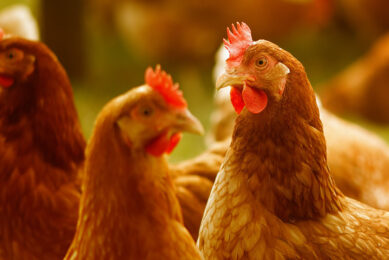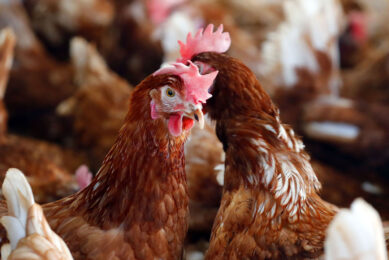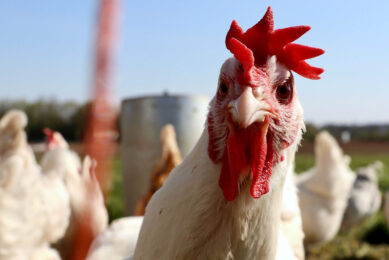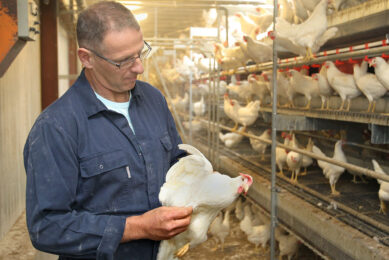From cages to cage free – an industry perspective

Activist pressure is driving European and UK poultry production away from enriched cages but the global egg market remains relatively unchanged.
Andrew Joret, Chairman of the British Egg Industry Council told a “Let’s Talk Cage Free Production”Elanco webinar, that free range production had grown by nearly 17% to 60% in the past decade with the rise coming from enriched cages. Egg consumption was 202 eggs/capita/annum – below the EU average – with the industry 92% self-sufficient and 84% of imports coming from egg products.
The EU situation is slightly different – 50% are now enriched cages with a large barn sector (34%) due to Germany and Netherlands and a larger organic percentage (6%), predominantly from Scandinavia. Globally, the market split shows the cage sector dominating the industry with 84% of eggs produced from conventional cages, 12.4% from barn and just 3.4% free range. This figure is even higher in Latin America (91.5%) and Asia (89.5%) but lower in less industrialised Africa (60.7%).
Timeline to free-range
The cage free challenge is whether this is driven by consumers or activist pressure, said Joret. In the UK and EU, this is driven by activists, exploiting the lack of consumer understanding of barn production. Timelines for change to free-range production are different across the world. The UK has pledged to end enriched cage production by the end of 2025 but this is non-binding, while the EU phase out is likely to start in earnest from 2027. In some parts of the globe there may be no change at all, he argued.
Carbon footprint of eggs
Joret touched on the environmental footprint of eggs, citing a World Resources Institute report showing how eggs are a low climate impact source of protein, particularly in standard cages. There is a battle between animal welfare versus concern for climate change and the environment.
The UK’s industry’s challenges are in 3 main areas
Uncertainty:
Cost and longevity of investment
NGO acceptance of barn systems
Future market demand changes
Financial risk:
Costs £25 per bird space when industry changed from cages to enriched cages, which amounted to £400m
Conversion costs to enriched cages to barn is approximately £20/bird space – so similar multi million cost to the changes.
Rearing investment needed as well
Animal welfare campaigners:
Joret said animal welfare campaigners, such as Compassion in World Farming are very much opposed to combi-cages and their intensive nature. So the industry sat down with Compassion to agree a Lion barn standard, with the agreement:
No flock size limit
Maximum 16.5 birds per sq metre of ground floor in multi-tier houses (0.67ft sq per bird)
Maximum 9 birds per sq metre of usable area (1.2 ft sq per bird) covered by the EU Directive
Maximum of 3 tiers above the floor permitted.
This meant that poultry producers have had to remodel enriched cage houses with a loss of capacity compared with enriched cages of around 30%.
When we have birds in enriched cages the birds perform generally very well but if you try and multi-age a free-range farm it can be disastrous.
Bird performance
One practical consideration is bird performance uncertainty – “there is no doubt that with laying farms you get the best performance with a single age, all-in, all-out system, but when you have large farms, you tend to have houses at different ages. When we have birds in enriched cages the birds perform generally very well but if you try and multi-age a free-range farm it can be disastrous.” This can leave farms 30-40 eggs per bird down but there is not enough experience how barn birds will perform on multi-age farms.
Consumer perception
Dr Deborah Temple, European Veterinary Specialist in Animal Welfare Science, Ethics and Law, agreed that consumer perception on animal welfare in laying hens was generally negative. This had led the European Commission to back the phasing out of cages for farm animals. Dr Temple said there had been a shift in animal welfare science to look at enhancing positive experiences which went beyond the 5 freedoms to concentrate on positive emotions in a stimulus-rich and safe environment.
Welfare needs to start in the hatchery
Good health is necessary for good welfare and the behaviour of animals is closely related to their welfare and needs to start in the hatchery. Areas to consider include chick handling, beak treatment, sexing of embryos, early post-hatch feeding and chick transport. On-farm issues include hen behaviour and user space with birds needing to forage, nest, perch and dust-bath but if they are unable to express this behaviour it can lead to negative consequences, including chronic stress response, leading to poor performance and suffering.
 Beheer
Beheer








 WP Admin
WP Admin  Bewerk bericht
Bewerk bericht